How do rockets really get to where they're headed? - Orbital Mechanics
My goal here
I am Alex, a huge space and aviation geek, working in the Aviation Industry for 11 years now. Ever since I was a child I was fascinated by aviation and space travel and I got to see a lot of science fiction movies, played a lot of science fiction games but it wasn't until I started documenting myself in that field that I understood what is it all about. And what a mind-blowing experience that was. I will try to open your eyes with this, maybe make you interested in following a science career, or just show you some cool and interesting facts.
I will try to keep it simple and easy to read for someone new to this, while also offering more information for the ones that know what I'm talking about.
Let's get more people interested in science,be it space or physics or otherwise. Let's share some of our mysteries.
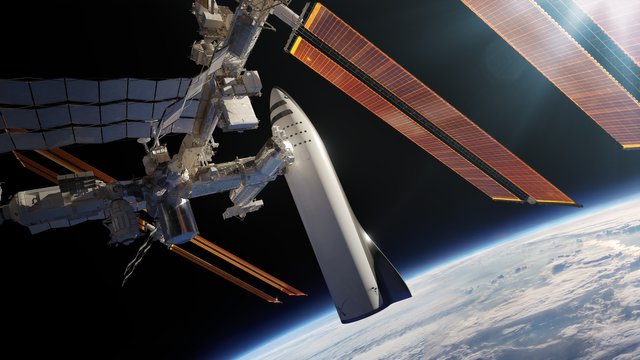
Beyond the simple preconceptions
In space nothing is still, everything moves in regards to everything else. Plotting a course is not like you see in the movies, at least not with the current or near future rocket engines we have right now and the current technology research.
Instead of thinking of space travel as a car ride, we have to understand that it is more like an application of ballistics. And it should look to us that way, since we strap ourselves in a bullet like rocket and then fire its engines. But the dynamics are not that complicated, once you figure the forces that act on the rocket.

Newton's laws of motion
- In an inertial frame of reference, an object either remains at rest or continues to move at a constant velocity, unless acted upon by a force.
- In an inertial reference frame, the vector sum of the forces F on an object is equal to the mass m of that object multiplied by the acceleration a of the object: F = ma.
- When one body exerts a force on a second body, the second body simultaneously exerts a force equal in magnitude and opposite in direction on the first body.
Newton's law of universal gravitation
Every point mass attracts every single other point mass by a force pointing along the line intersecting both points. The force is proportional to the product of the two masses and inversely proportional to the square of the distance between them

So what does this mean for our rocket?
First it means that by firing the rocket engines in a direction we can move the spacecraft in the opposite direction.
Secondly it lets us calculate the forces we need to exert in order to break free of the gravity.
Three - Two - One - Liftoff
Vertical Climb
As soon as the spacecraft leaves the launch pad we have the following main velocity vectors acting on it:
- gravity acceleration
- thrust
- rocket's velocity
The engine uses its thrust to fight the gravity and increase the velocity. This is the vertical climb phase and the phase in which the gravity taxes the spacecraft the most. But this is also very important to the spacecraft because reaching a high altitude faster means that the aerodynamic drag decreases a lot, especially when preparing for the next phase of the flight. Rockets almost never just launch straight up and hope to meet a planet in it's path.
The formula for this would be: 
Gravity Turn or Pitchover is the second maneuver that is executed as early as possible by using the gimbal of the engines or by using cold gas thrusters on the nose of the rocket or a combination of the both. The pitch change from the unevenness of the thrust is usually very small, usually only a few initial degrees.
This change of pitch means that the spacecraft is no longer flying vertically and is exposed to different forces. The velocity vectors are similar to the vertical flight phase but because the gravity acts on the same vertical plane it makes the spacecraft change it's pitch without additional input from the engines, tasking them with the only job of increasing the speed of the spacecraft. This saves a lot of fuel and also positions the spacecraft in a correct position for leaving the atmosphere and reducing drag for ascent to orbit.
In this phase of the flight the flight trajectory looks like an ever increasing arc:
Downrange acceleration is the last sub orbital phase of the launch.
The rocket is now gaining speed and altitude at an increased rate in the thin layers of the upper atmosphere and this is usually the moment to ditch the heavy solid fuel boosters which were used to fight off the initial ascent and which were very effective in the thick atmospheric layers. Aerodynamic stress is limited in this phase and the rocket has now leveled off above the atmosphere . The ever increasing trajectory arc grows until it looks like the rocket will fall to the ground just beyond the horizon.
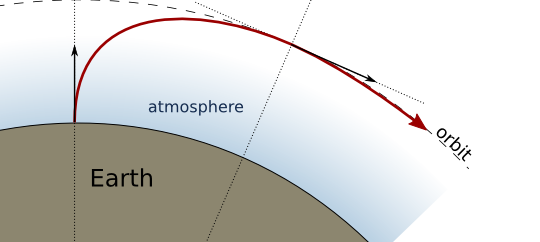
But once the spacecraft has gained enough speed and altitude and is out of the atmosphere and there is no aerodynamic drag, according to the First Law of Newton, it must mean that the rocket is :
IN ORBIT
These phases of the launch procedure were theorized and tested by many of the first space engineers after the Second World War and are a culmination of a long series of successful and failed launches around that time frame. A full graphic of the phases is seen here:
And also a nighttime long exposure photo of a Falcon 9 Rocket. Pay attention to the intensity of the burn that is indicative of the atmospheric density and the fast change of the angle right after launch :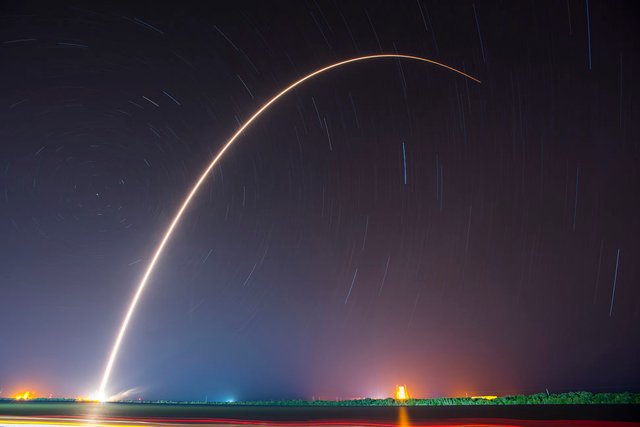 Source: SpaceX website
Source: SpaceX website
We will not be talking about coasting phases or other vehicle-specific orbiting techniques for now, but keep in mind that different spacecraft have different ways of achieving the desired orbit, speed or time frame.
Once in orbit, the spacecraft will have two main forces exerting their grab onto it: the tangential velocity and the gravitational pull.
The tangential velocity
Vt = ω r
where ω is the angular velocity and r is the radius of the body is the speed that the rocket had at the time of orbital insertion.
The gravitational pull
F= m a
where is stronger or weaker depending on how big or how small the orbit altitude is. More details into that below.

Maneuvering a spacecraft while in orbit
In order to fully explain the maneuvers we must understand some of the terminology:

Animation of the orbital phase differences of Earth and Mars. One can notice the difference in the tangential velocities also, which seem to slow down with increased distance from the Sun.
- Apoapsis
- Periapsis
- Ascending node
- Descending node
- Eccentricity
- Inclination
- Orbit normal
- Prograde
- Retrograde
- Burn
- Delta-v (Δv)
A quick graphical explanation of the major terms. I will explain each of them in a few words:
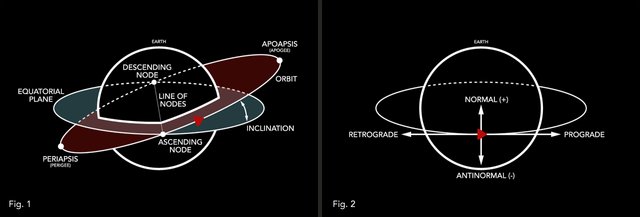
Image courtesy of thefewgoodmen.com forum
Apoapsis and Periapsis
Every orbit has two apsides. The apoapsis is the orbital point in which the object is the farthest from the orbited body and the periapsis is the point in which the object is the closest to the orbited body
Ascending and Descending node
The ascending node is the point at which the orbit crosses the reference plane moving "up" towards the orbit's normal and the descending node is the point at which the orbit crosses the reference plane moving "down". Sometimes instead of using "up" and "down", "north" and "south" is used instead.
Eccentricity
Since most of the orbits are ellipses, this defines the following properties:
- ecc = 0 - circular orbit
- 0 < ecc < 1 - elliptical orbit
- ecc = 1 - parabolic orbit - escape orbit.
- ecc > 1 - hyperbolic orbit - escape orbit
Inclination
An orbit's inclination is the angle between the orbital plane and the reference plane
Orbit normal
The normal vector of the Orbital plane. It will always be "north" if the spacecraft is orbiting counter-clockwise and "south" if the spacecraft is orbiting clockwise.
Prograde and Retrograde
Prograde is the direction of spacecraft's travel along it's orbital plane.Always tangent to the current point in orbit.
Retrograde is the reverse of prograde.
Burn
The action of firing up the engine(s) in order to alter the trajectory.
Delta-v (Δv)
The change in the spacecraft's velocity measured in meters per second(m/s). It represents the total amount of acceleration energy required to perform a maneuver. It usually is used to calculate different maneuvers and to estimate and manage the remaining fuel budget. Delta-v is taking the weight of the rocket into account so the same fuel tank with the same thrust will return a lower Delta-v on a heavy spacecraft than compared to a light one.

OK, OK, But how is it practically done?
Let's assume we have the following situation viewed from the top. Our spacecraft is in orbit around Earth ( or any other body ) and we want to increase the orbital radius, noted with R. To do this and to minimize the amount of energy spent it would be wise to wait until the spacecraft reaches the Apoapsis and time the middle of the burn time to be at the Apoapsis. This means that if our new orbit requires 500 Delta-v and the engines can spend it in 100 seconds of thrust to time the burn:
The nose of the rocket needs to be prograde so we will need to be sure to point the thrust retrograde, to move in the opposite direction of the thrust. This works because when we add more angular velocity to a body we increase the centripetal forces, and the gravity loses the fight to keep the object that close to itself. When time comes, we need to do the burn, spending the Delta-v according to the figure, leaving the green lower orbit and moving into what is called a transfer orbit ( the yellow trajectory). This new orbit is always an elliptic orbit, since energy was expended only on one side of the orbit, increasing it's eccentricity
If no other input is being set, the spacecraft will follow an indefinite elliptic orbit. In order to circularize the orbit we need to spend an equivelent Delta-v' in the new apoapsis ( but lower than the original Delta-v since the orbit radius has increased and the energy needed has decreased).This will be done by following the same formula already set previously.
This will make the spacecraft follow a third trajectory, marked with red in the figure. This is called a Hohmann Transfer Orbit and you can see here a list of the Delta-v budgets needed to do specific actions:
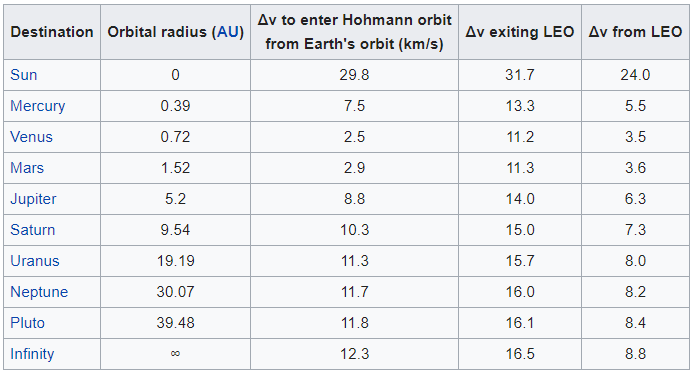
Source
To decrease the orbit radius the exact same procedure, but instead of burning thrust retrograde, you will need to burn prograde. Speed will decrease and gravity will win the forces fight, pulling the spacecraft closer.
The same principles apply to changing the plane of the orbit. If we want to change the orbit to a polar orbit ( 90 degrees instead to 0 degrees on a normal equatorial orbit ) we would need to wait until the spacecraft reaches the ascending node and then burn ( taking into account the burn time calculation we did before ) .
There you go! Now you know how to theoretically alter orbits
Perhaps it reminds you a little of the first year of chemistry and the energy levels and the electrons. See how nicely everything is adding up? And logically? This is the pleasure of science.
A good practical simulation for these maneuvers is in Kerbal Space Program. I wrote about it a few days ago and I recommend it for all these and much more. It is a complete simulation tool even though it's wrapped as a non serious game.

Sources:
The text is original. I tried to keep it simple for anyone to read while also trying to give something cool to the ones that know about astronomy.
Images are public domain under GNU or Creative Commons; sourced appropriately & most with linked licenses.
The text dividers were made by me. I couldn't find a rockety divider :P
If you have any other questions I will be more than happy to talk them with you!
Thank you for reading and I wish you a perfect week!
My other science articles:
Falcon Heavy Launch
Kerbal Space Program Simulator
A thought on gender-bias
Using GPS while in flight to track yourself on the globe
Air Traffic Controllers


Check out more of the science at SteemStem, I have read some incredible articles over there, and I honestly don't have enough votes to reward everyone doing good science there!

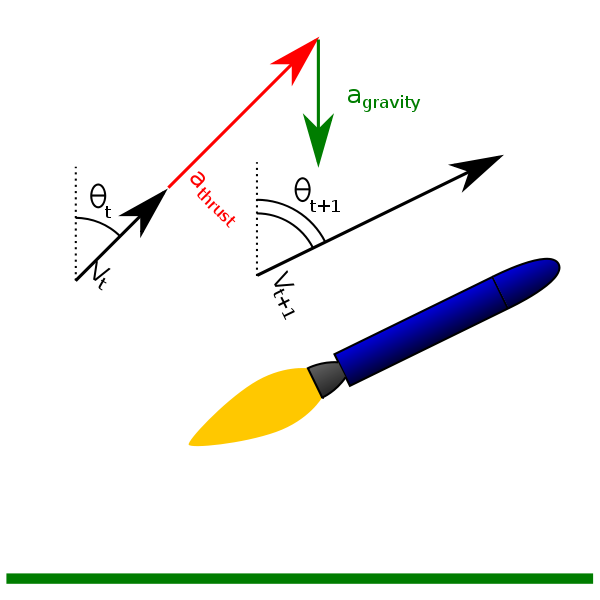

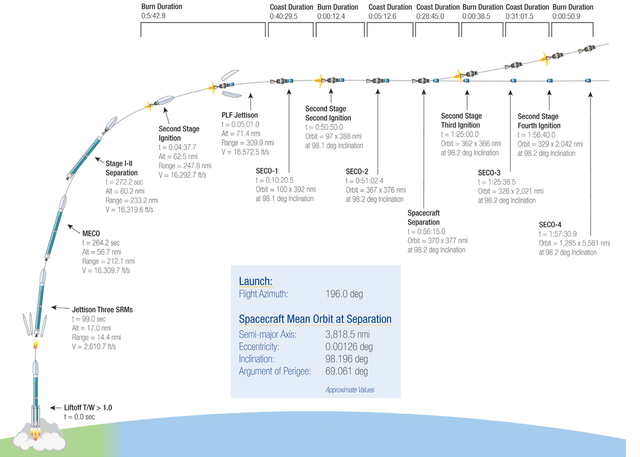
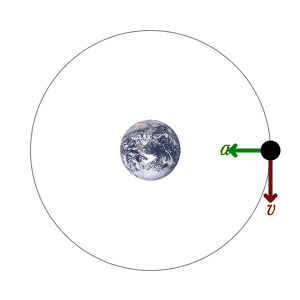
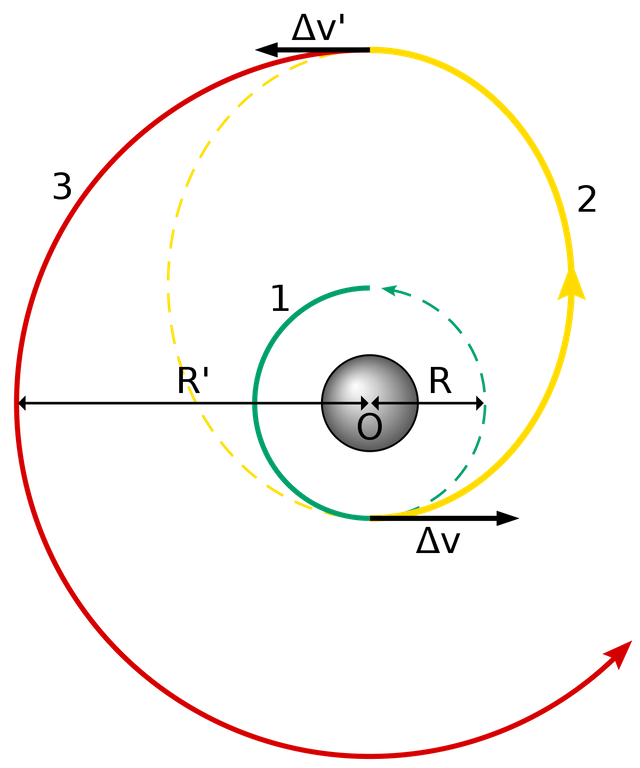
Beautifully written!
Everything is explained really simple, good job! :)
Cheers!
Definitely science is something incredible, even more when talking about space and everything that implies that, it really is very exciting to know how all the laws that allow the satellites to stay in orbit work, besides the simple and extraordinary fact of taking off from the land to get to the wonderful space
I agree. My mind is buzzing with subjects, I think i can get even better and faster in writing, now i have 2-3 days of cooling..
I am shy and I am not a real writer as i said to a new friend in the Discord group "The Writers Block".
But someone has to do it. For science! :)
Phaw that's got to be one of the most insanely in-depth posts I've read! Awesome to read though.
I do have a question. On a day-to-day or week-to-week basis how much adjustment of orbit needs to be made by most space craft/ sattelites. Or are they put so precisely into position to start that they're mostly left untouched.
It is hard to get a simple answer on that. Mathematically an orbit is fixed, but in practice it depends on the orbital radius. The lower orbits still encounter runaway atmospheric particles and space dust so the lower the orbit the more adjustment is needed to maintain the orbit.
What I know by heart is that the ISS travels at ~17,500 mph or 7.7 km/s and it falls up to 1.5-2 kilometers per month. so every day it falls up to 100meters. To prevent this, the ISS engines are fired every month with the engines pointed retrograde ( to increase the tangential velocity ). This is enough to speed it up. Due to its sheer mass, the Space Shuttle was used to boost it up with the extra fuel it had before leaving every time, but since then this maintenance is done solely by the Progress Module ( a Russian module - basically a Soyuz, which also acts as the lifeboat of the ISS ).
And the fuel spent is a lot ( here documenting comes in) :
"The ISS requires an average 7,000 kg of propellant each year for altitude maintenance, debris avoidance and attitude control."
and
"Multiple supply vehicles are required to satisfy the ISS's 7,000 kg annual average propellant need.
The Propulsion Module would hold 9808 kg fuel. Progress M holds 1100 kg; Progress M1 holds 1950 kg. ESA ATV holds 4,000 kg."
Wow this is much more than I thought.
Update1:This bandwidth limit is killing me, but I will retry until it works :)
Update2:Since I coudn't post until now I remembered another image which rocked my world:
Finally :)
Hey man! Thanks for the explanation! I knew the ISS orbited low, but I had no idea it required such an active effort to keep it in space!
So the amount of fuel required just to keep afloat is alone enough to prevent the ISS from being self-sufficient... an interesting point. I always thought it was way less dependant than it appears it is!
PS. No wonder you're having issues with bandwidth limit. That image HUGE!
I think the image doesn't reside on the blockchain, that would be overkill. Only the link is written for eternity on the blockchain, and that's a few kb. I am new still and don't have a lot of bandwidth. It will get better after I grow a little more!
A very nice presentation, I will visit again to read more thoroughly :)
Well done!
(Liked your steemstem gif also! - and agree in regards to >>>)
Thanks, from what I talked to my friends I noticed that not many people knew it worked like this. I used their feedback to write it.
I love going to spaces....but my passion turn nothing then reading it alone...thanks you have a nice article..awesome brother
Happy to be of service! My goal is to push science to more people! This will have greater implication in social developments and human progress.
Congratulations! This post has been upvoted from the communal account, @minnowsupport, by alexdory from the Minnow Support Project. It's a witness project run by aggroed, ausbitbank, teamsteem, theprophet0, someguy123, neoxian, followbtcnews, and netuoso. The goal is to help Steemit grow by supporting Minnows. Please find us at the Peace, Abundance, and Liberty Network (PALnet) Discord Channel. It's a completely public and open space to all members of the Steemit community who voluntarily choose to be there.
If you would like to delegate to the Minnow Support Project you can do so by clicking on the following links: 50SP, 100SP, 250SP, 500SP, 1000SP, 5000SP.
Be sure to leave at least 50SP undelegated on your account.
Well done! This post has received a 5.26 % upvote from @litasio thanks to: @luciancovaci. Whoop!
If you would like to delegate to the @LitasIO you can do so by clicking on the following link: 10SP
I bet everyone too has the dream of going to space even when I am growing older now. But, I know that it's never going to be, so I rather stick to national geographic to have a look at space virtually. Nice work!
Thanks! We're not all supposed to be astronauts, but the seeds are there for the future. A great moment to be alive.
super fascinating! there are so many exciting things happening with space exploration right now. thanks for sharing!
It is my pleasure. Thanks!
Really well done post! Takes me back to my analytical geometry/trigonometry class. The one I barely passed even after hours a week of tutoring hehe. I made it half way through your equations =p. Enjoyed the read very much, though. You are a good teacher. Have you looked up @utopian? I think you might fit in well there.
Side note. I fundraised in 7th grade to go to the talihasse Florida space camp for a week. It was a really cool program. I learned I did not want to be an astronaut there, mainly because I couldn't handle the 360° gravity spinny thing. I forget now what it's called. Anyway, thanks again for the well constructed post
Thanks a lot! I tried to keep it simple since as a Computer Programmer i often am lazy and want the simplest solutions to my problems. It's as simple as I could, but I am not a teacher or have any experience teaching. And that is an art in itself!